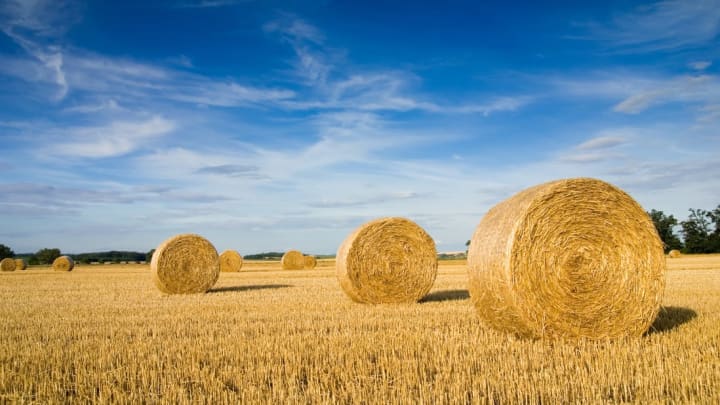The words straw and hay are often used interchangeably, and it's easy to see why: They're both dry, grassy, and easy to find on farms in the fall. But the two terms actual describe different materials, and once you know what to look for, it's easy to tell the difference between them.
Hay refers to grasses and some legumes such as alfalfa that are grown for use as animal feed. The full plant is harvested—including the heads, leaves, and stems—dried, and typically stored in bales. Hay is what livestock like cattle eat when there isn't enough pasture to go around, or when the weather gets too cold for them to graze. The baled hay most non-farmers are familiar with is dry and yellow, but high-quality hay has more of a greenish hue.
The biggest difference between straw and hay is that straw is the byproduct of crops, not the crop itself. When a plant, such as wheat or barley, has been stripped of its seeds or grains, the stalk is sometimes saved and dried to make straw. This part of the plant is lacking in nutrients, which means it doesn't make great animal fodder. But farmers have found other uses for the material throughout history: It what's used to weave baskets, thatch roofs, and stuff mattresses.
Today, straw is commonly used to decorate pumpkin-picking farms. It's easy to identify (if it's being used in a way that would be wasteful if it were food, chances are it's straw), but even the farms themselves can confuse the two terms. Every hayride you've ever taken, for example, was most likely a straw-ride.
Have you got a Big Question you'd like us to answer? If so, let us know by emailing us at bigquestions@mentalfloss.com.
